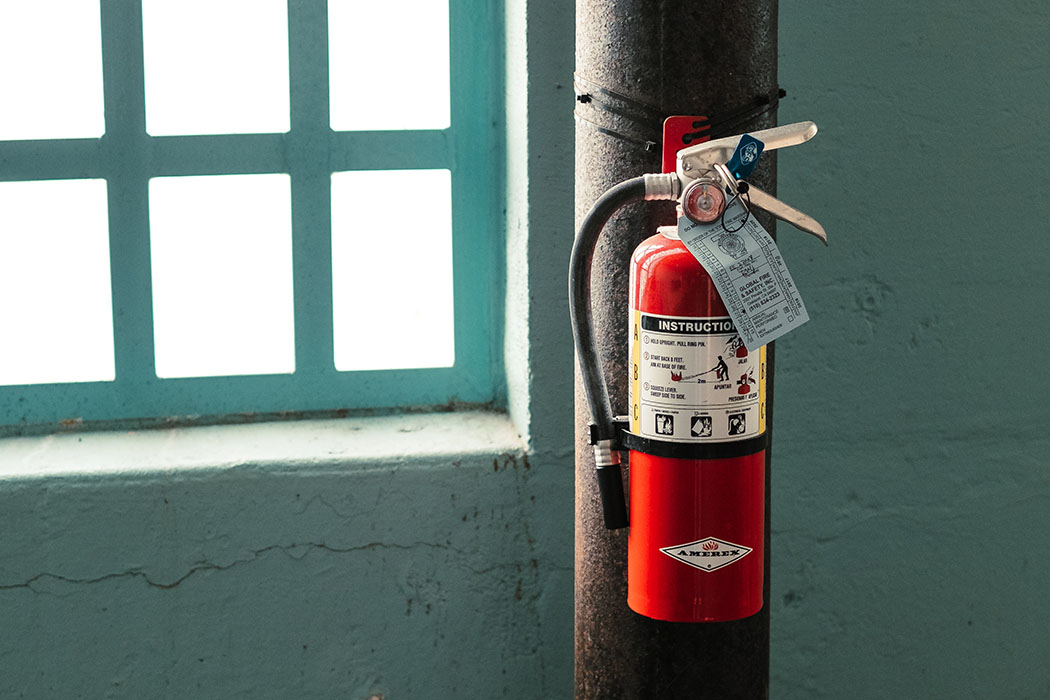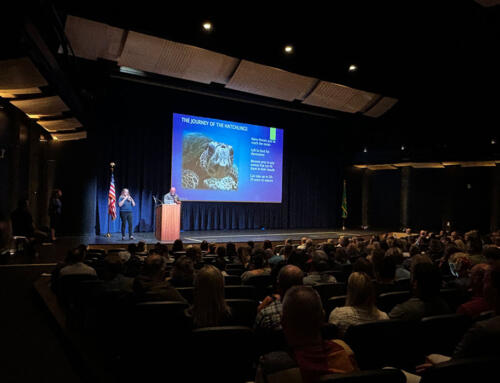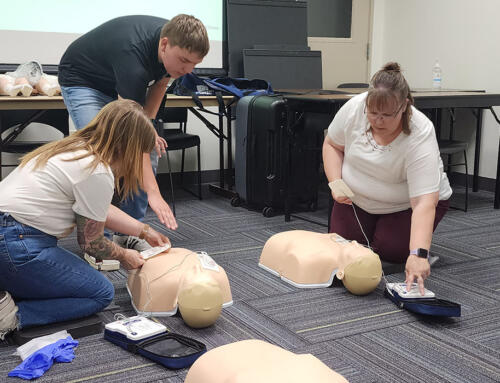Fire extinguishers, when correctly used on the type of fire they are intended for, can have a large role in stopping major fire damage and dollar losses.
Elements of a fire
Four elements must be present for a fire to exist:
- Oxygen to sustain combustion
- Heat to raise the material to its ignition temperature
- Fuel to support combustion
- Chemical chain reaction between the three elements
Removing any one of the four elements will extinguish the fire.
Fuel classifications
Fires are classified according to the type of fuel that is burning. If you use the wrong
type of fire extinguisher, you might make matters worse.
It is very important to understand the four different fire (fuel) classifications:
- Class A: Wood, paper, cloth, trash, plastics — solids that are not metals
- Class B: Flammable liquids — gasoline, oil, grease, acetone; includes flammable gases
- Class C: Electrical — energized electrical equipment. If it is “plugged in.”
- Class D: Metals — potassium, sodium, aluminum, magnesium; requires Metal-X, foam, and other special extinguishing agents
- Class K: Fires involving combustible oils, lards and fats in commercial cooking
How to use a fire extinguisher
It is easy to remember how to use a fire extinguisher if you remember the acronym, “PASS”.
- Pull the pin
- Aim the nozzle or hose at the base of the fire. Hit the fuel not the flames.
- Squeeze the trigger to discharge the extinguishing agent
- Sweep from side-to-side until the fire is completely out.
Start using the extinguisher from a safe distance away and then slowly move forward. Once the fire is out, keep an eye on the area in case it re-ignites.
Rules for fighting fires
Fires can be very dangerous and you should always be certain that you will not endanger yourself or others when attempting to put out a fire. For this reason, when a fire is discovered:
- Assist any person in immediate danger to safety if it can be accomplished without risk to yourself.
- Call 911 or activate the building fire alarm.
If the fire is small you may attempt to use an extinguisher to put it out, but only if you are safe from toxic smoke or other hazards, you have a clear means of escape, and your instincts tell you it’s okay.
If you are uncomfortable with the situation for any reason, just let the fire department do their job. Do not attempt to fight the fire if the fire is already spreading quickly, you don’t have adequate or appropriate equipment, or you don’t have a safe means to escape. If any of these situations are present, it is best to simply evacuate the building.





 ESD 112 equalizes educational opportunities for learning communities through innovative partnerships, responsive leadership, and exceptional programs.
ESD 112 equalizes educational opportunities for learning communities through innovative partnerships, responsive leadership, and exceptional programs.